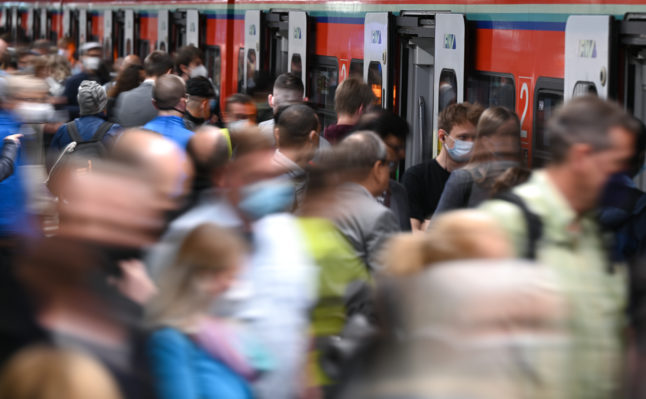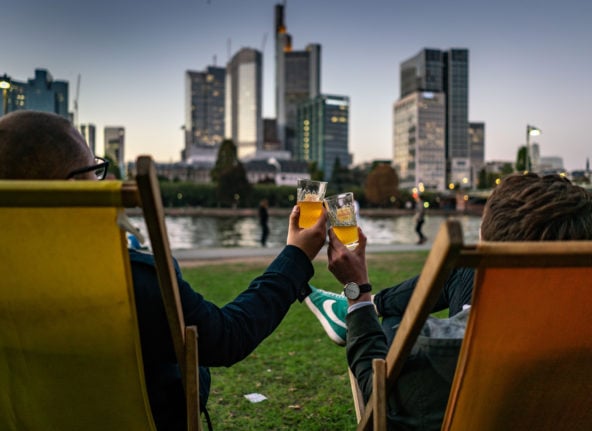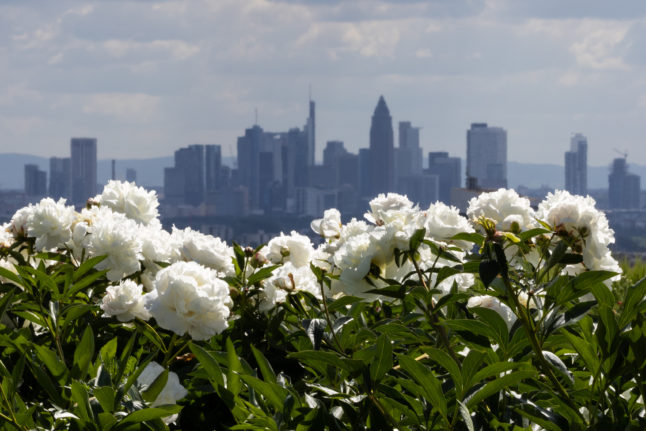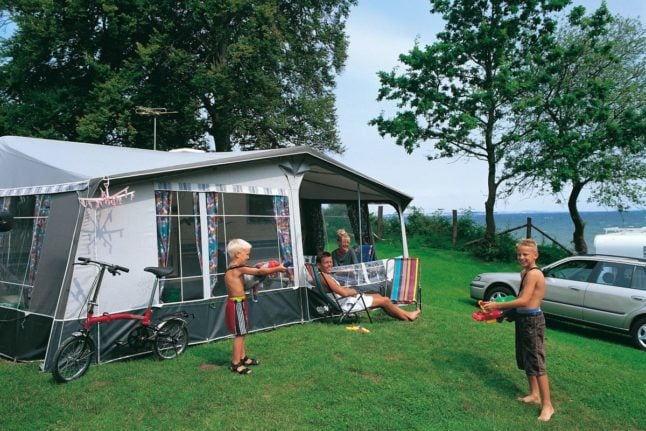Known as Mainhattan thanks to its impressive skyscraper skyline, and with a bustling jobs scene, it’s no wonder that Frankfurt am Main is a city that many foreigners consider moving to.
But aside from business, we wanted to find out what else makes Frankfurt – and the area around it – tick. And who better to ask than The Local readers who live there?
International feel, good connections and great nature
Maybe it has something to do with the many flight connections to the rest of the world from the airport, or perhaps it’s the thriving jobs scene. Whatever the case, readers said something special about Frankfurt is that it’s an international city with a small-town feel.
“Frankfurt really offers the best aspects of a large megacity like NYC, London or Paris on a much smaller scale – so it offers world-class shopping, cuisine and amenities without overwhelming crowds,” said Michael Schacht, 31. “It’s super multinational as a result.”
Richard Davison, 45, who lives in the Sachsenhausen area of Frankfurt, said: “In my opinion Frankfurt is a special city as it is very international. As people come for work, it seems that it is very welcoming as many people are new, or have not lived in the city for a long time.
“There is a wide variety of affordable cuisine, bars and hospitality. It is a big city feel in a small city. What makes it special is the green spaces and surrounding nature: Taunus, Spessart, Odenwald and the Rhine and vineyards. Trains and flights are also so easy from Frankfurt.”

READ ALSO: 10 facts you probably didn’t know about Frankfurt (even if you live there)
Tom Boon, 26, who lives in central Frankfurt, said “the diversity” is the best part of life in the Hesse city that’s home to about 753,000 people.
“It’s also a great place for English speakers to feel comfortable as you can always bump into somebody you can talk to,” he added.
Laura, 42, from Sweden, said the best thing about Frankfurt is the “diversity” and that it “feels like a village in some parts”.
Angeeka Biswas, 34, said Frankfurt’s positive points include it being “accessible by public transport in almost all parts of the town” as well as the different cuisine available, and the large expat population.
“Frankfurt has lots to offer and is full of many different shops, restaurants and bars,” said Frankfurt resident Cara Schaeffer.
“Frankfurt is also surrounded by the Taunus mountain range,” said Schaeffer. “However the most special thing about Frankfurt are the people that live there.
“You’ll meet people from all over the world from different cultures, regions and backgrounds. It’s an extremely international city, where more than 25 percent of the residents don’t have a German passport.”

Lots of people said the surrounding nature was a real draw of Frankfurt.
Nichola, 64, said the “proximity to the Main River, access to the Großer Feldberg region with the possibility of cycling in the summer and skiing in the winter,” were some of the best things about Frankfurt.
She also said the airport is “one of the hubs for Lufthansa so it’s easy to fly almost anywhere”.
Where are the best places to go?
Lots of people talked about the food and drink offering in the Hesse city, as well as the landscape.
Natalie, who lives in Taunus, said: “Explore the Taunus, walk the river, shop on the Zeil (street), eat in Saschenhausen or in Bornheim or Nordend.”
“Go for brunch,” said Angeeka Biswas. “Bike beside the Main river, exercise or just sit beside the river. It feels so calm inside the chaos of the city.”
READ ALSO: Hesse – 7 maps that explain the home of Germany’s financial hub
Smruthi Panyam said his top tip is to grab a steak at M Steakhouse in Feuerbachstraße.
Simon Slade, 70, in Wehrheim, recommends “the English Theatre, walking or cycling along the river Main” as well renting a car and driving north west to “the Hintertaunus and the river Lahn – you will find stunningly beautiful countryside”.
Slade also said Frankfurt has “numerous organic veggie and vegan restaurants, especially along the Bergerstrasse”.
“If you want real authentic high quality traditional German inexpensive food at half the price of Frankfurt, try the Taunus restaurant in Obernhain.” he added.
READ ALSO: Three German cities ranked in the top 10 places to live
Cara Schaefer’s top tips include going to the top of the Main Tower to view the city, taking a boat tour, and enjoying the nightlife “especially at 22nd lounge, a cocktail bar on the 22nd floor of a sky scraper”.
Schaefer’s top restaurant tips are Saravanaa Bhavan, a vegetarian Indian restaurant near the main station and Ristorante Arte – an Italian in the Bockenheim district.

Tom Boon recommends that visitors “take the Ebbelwei Expreß, a tourist tram that loops around the city every half hour or so”.
“The ticket includes a drink and pretzels,” he added. Meanwhile, Boon says the best pizza in Frankfurt “can be found at Giulio’s on Wittelsbacherallee”.
Lots of our readers said Apfelwein – known colloquially as Ebbelwoi, is the drink to try out in Frankfurt.
Boon said: “Apfelwein arguably trumps beer in Frankfurt. I prefer to drink it mixed with cola (it’s much better than it sounds, and popular enough that it is sold premixed in cans), though some traditional Apfelwein pubs will refuse to serve this combination based on tradition.
“I would recommend avoiding the big chain-eque bars in favour of the smaller pubs and beer gardens dotted around the city.”
Others flagged up the architecture and buildings.
“I really love going to the Dom Romer district to see the old city hall and rebuilt square which is really eye-catching,” said Michael Schacht.
“The New Altstadt is also really beautiful. I also like walking along the river bank when the weather is nice, visiting Old Sachsenhausen and Bornheim for a cozier small town vibe. Though a bit on the outskirts, Hochst has a traditional medieval Altstadt that’s worth a stop to see.”
Keep a lookout for our second feature on Frankfurt coming soon.




 Please whitelist us to continue reading.
Please whitelist us to continue reading.
Member comments